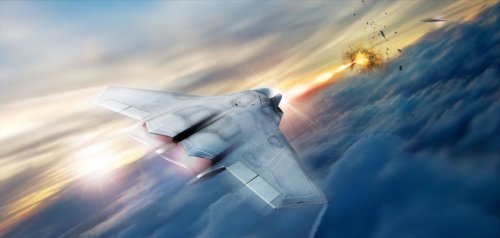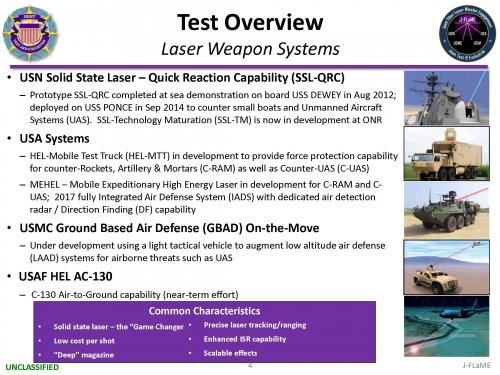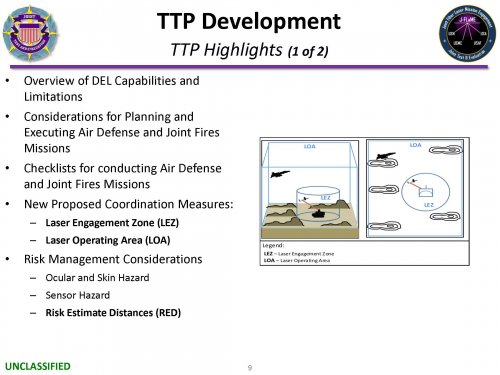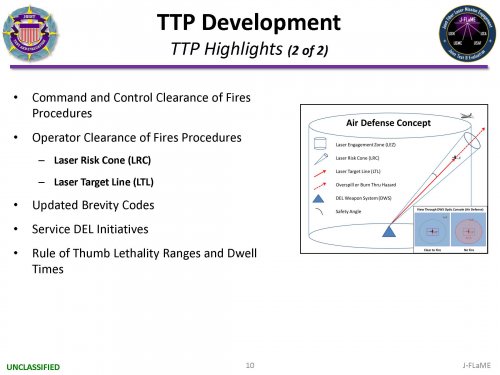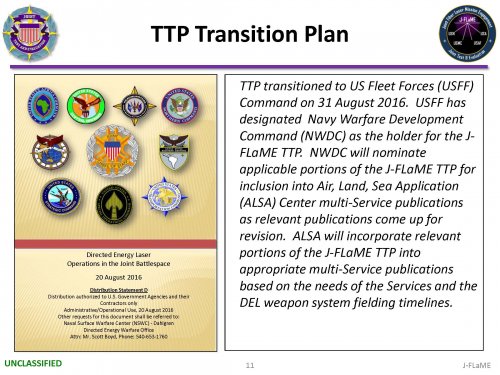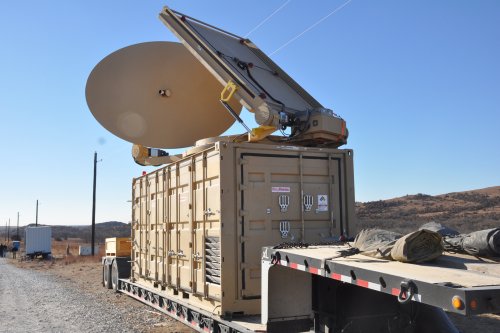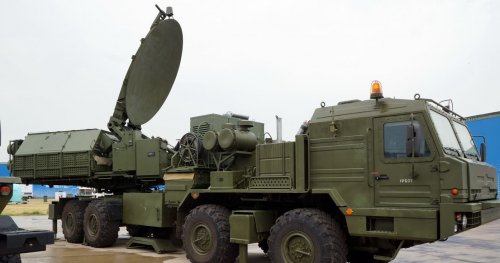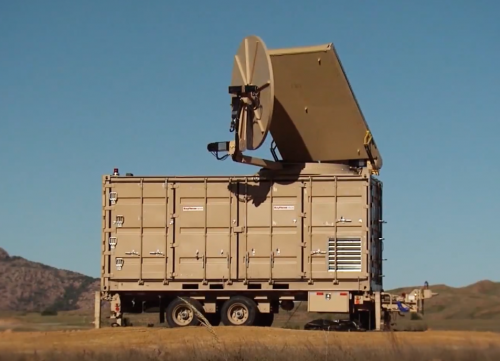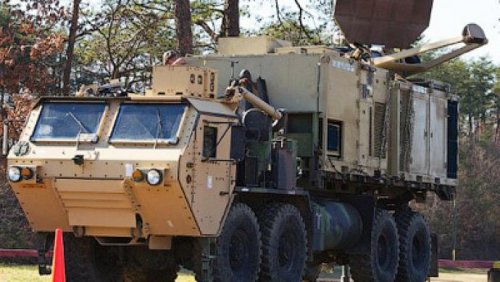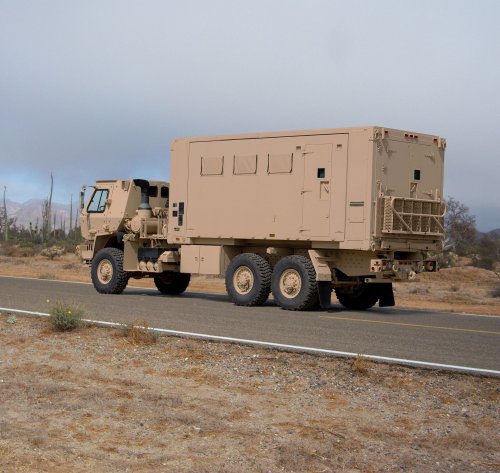The Defense Department has selected General Atomics to compete in the new technology demonstration effort to integrate a low-power laser on a high-altitude unmanned aerial vehicle, expanding the project to develop different approaches for a potential precursor to an airborne laser capable of intercepting ballistic missiles during the boost phase of flight.
On Nov. 1, the Missile Defense Agency awarded General Atomics' San Diego, CA-based Electromagnetic Systems Group an $8.8 million cost-plus-fixed-fee contract for the Low-Power Laser Demonstrator Phase 1 effort.
"Under this new contract, the contractor will perform the next step for the LPLD effort that addresses laser power and aperture size by integrating and testing a low-power laser on an unmanned aerial vehicle," the Defense Department said in a Nov. 6 contract award announcement.
On Oct. 5, MDA awarded Lockheed Martin a $9.4 million contract as part of the same effort, which aims to explore a potential directed-energy mission while refining a missile defense concept of operations doctrine for incorporating lasers into the Ballistic Missile Defense System.
Following the award to Lockheed, MDA's Director Lt. Gen. Sam Greaves said, "Our plan is to award similar technology demonstration contracts later this year."
MDA is developing the Ballistic Missile Defense System with the goal of providing a "layered" shield that integrates sensors and interceptors to intercept ballistic missiles during different phases of flight. The current program of record focuses on mid-course and terminal phases of flight, including Ground-based Midcourse Defense, Aegis Ballistic Missile Defense, Terminal High Altitude Area Defense, and Patriot.
MDA is now working to get "at the hardest phase of flight, which is boost phase," agency Deputy Director Rear Adm. Jon Hill said at a Nov. 2 public gathering on Capitol Hill.
A directed-energy weapon is the focus of the boost-phase effort.
"There is great promise in directed energy," Hill said. "For us, it is all about scaling. Scaling up the power. . . . If you're going to be going after a ballistic missile, you don't want to be over enemy territory. You don't want to be in range of the air defense batteries. You want to be at standoff range and power gets you that standoff range."
Under the contracts MDA has recently awarded Lockheed and General Atomics, both companies are required to flesh out an entire LPLD system -- a tracking laser, a defensive laser and a beam-control system integrated onto a high-altitude aircraft of their choosing.
General Atomics' unmanned aircraft system business unit provides MQ-9 Reapers aircraft to MDA to demonstrate acquisition and tracking at operational ranges with a Multi-spectral Targeting System.
In 2009, then-Defense Secretary Robert Gates terminated MDA's previous attempt to develop a flying laser installed in a highly modified Boeing 747 designed to knock down ballistic missiles during the boost phase of flight, a project launched in 1996 that ran up a $5 billion tab.
"We learned a lot about high-altitude flying and shooting down ballistic missiles," Hill said of the Airborne Laser program. "It is not easy; the CONOPS were really difficult," he said of the concepts of operations.
After more than 10 years of work, MDA could not produce a laser with enough power to knock down a missile in boost phase more than 50 miles from the launch site, requiring the huge planes to loiter deep in enemy airspace to have a chance at a direct hit.
"You almost have to have exquisite intelligence and indications and warning; you've got to know where these launch sites are and where they are going to occur so you can have your sensors and weapons in place to deal with boost phase," Hill said. "That is hard."
In 2015, however, MDA launched a new boost-phase project, betting that breakthroughs in directed-energy technology could produce a speed-of-light missile defense program.
Technical challenges include scaling a laser to hundreds of kilowatts -- or even megawatt-class power and producing a system with high electrical-to-optical efficiency and excellent beam quality.
Earlier this summer, MDA began window shopping for a high-altitude aircraft to carry a laser as part of the project to develop a prototype for a new airborne laser and advance the long-standing desire to intercept adversary ballistic missiles during the boost phase of flight.
"We're working on the technical side at the Missile Defense Agency," Hill said. "The combatant commanders and the services are thinking through, whether it is the first launch -- because it does matter where you are at -- or whether it is after the first launch. The actions you take might be different. That's an operational question the forces are dealing with today."
In June, MDA solicited industry for ideas on high-altitude, long-endurance (HALE) unmanned aircraft for the Directed Energy Demonstrator Development project, which aims to pair an aircraft with the Low Power Laser Demonstrator project. The two high-energy laser projects that MDA believes hold promise are the Diode Pumped Alkali Laser System (DPALS) with Lawrence Livermore National Laboratory in Livermore, CA, and Fiber Combining Lasers (FCL) with the Massachusetts Institute of Technology's Lincoln Laboratory.
"If we can produce the technology, understand it, put the investments in it, and determine whether or not it is feasible, and get to a higher powered laser and get it to a weight that can be carried by a long-endurance aircraft, then we have an option that we can provide warfighters," MDA's deputy director said.

